

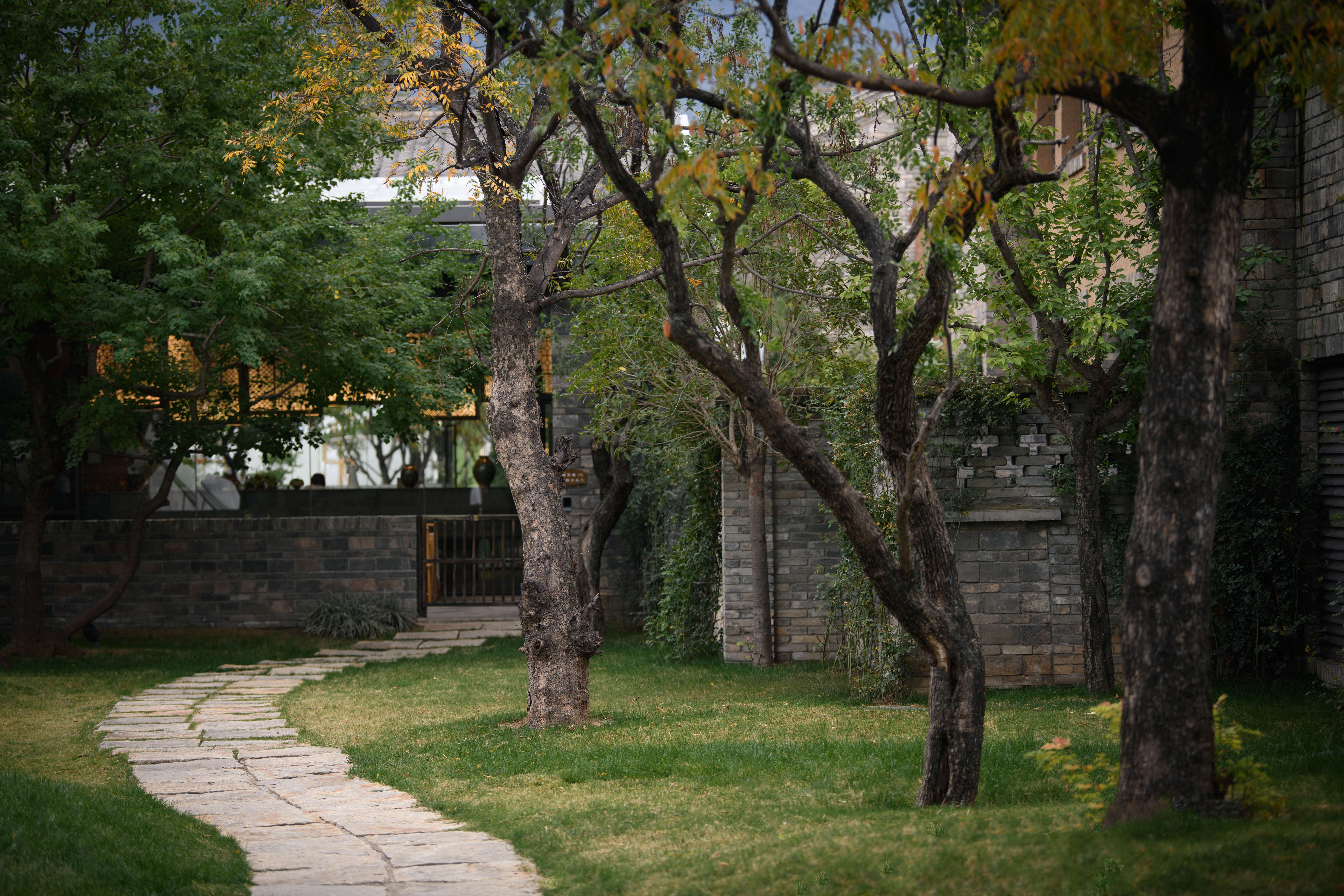
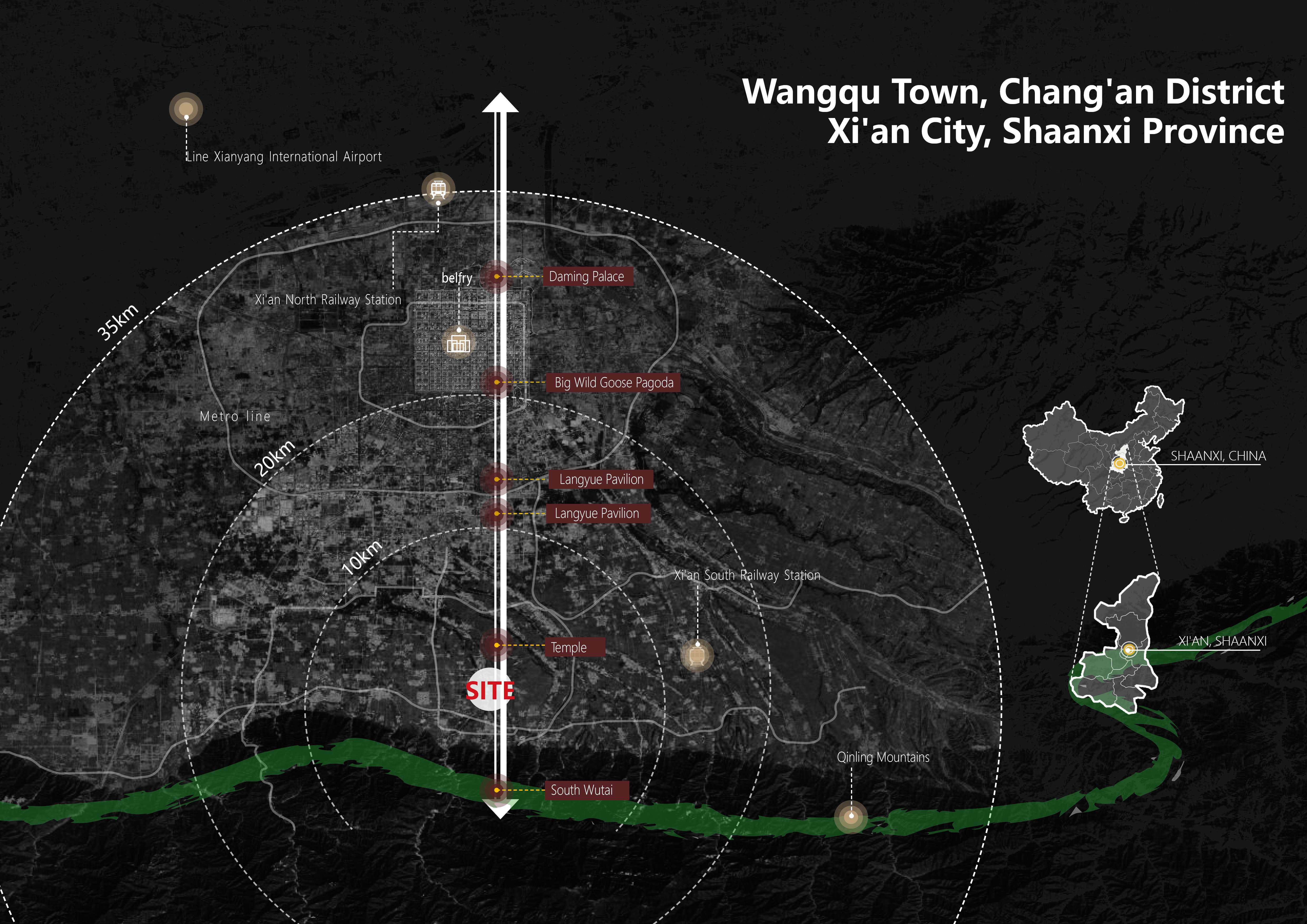
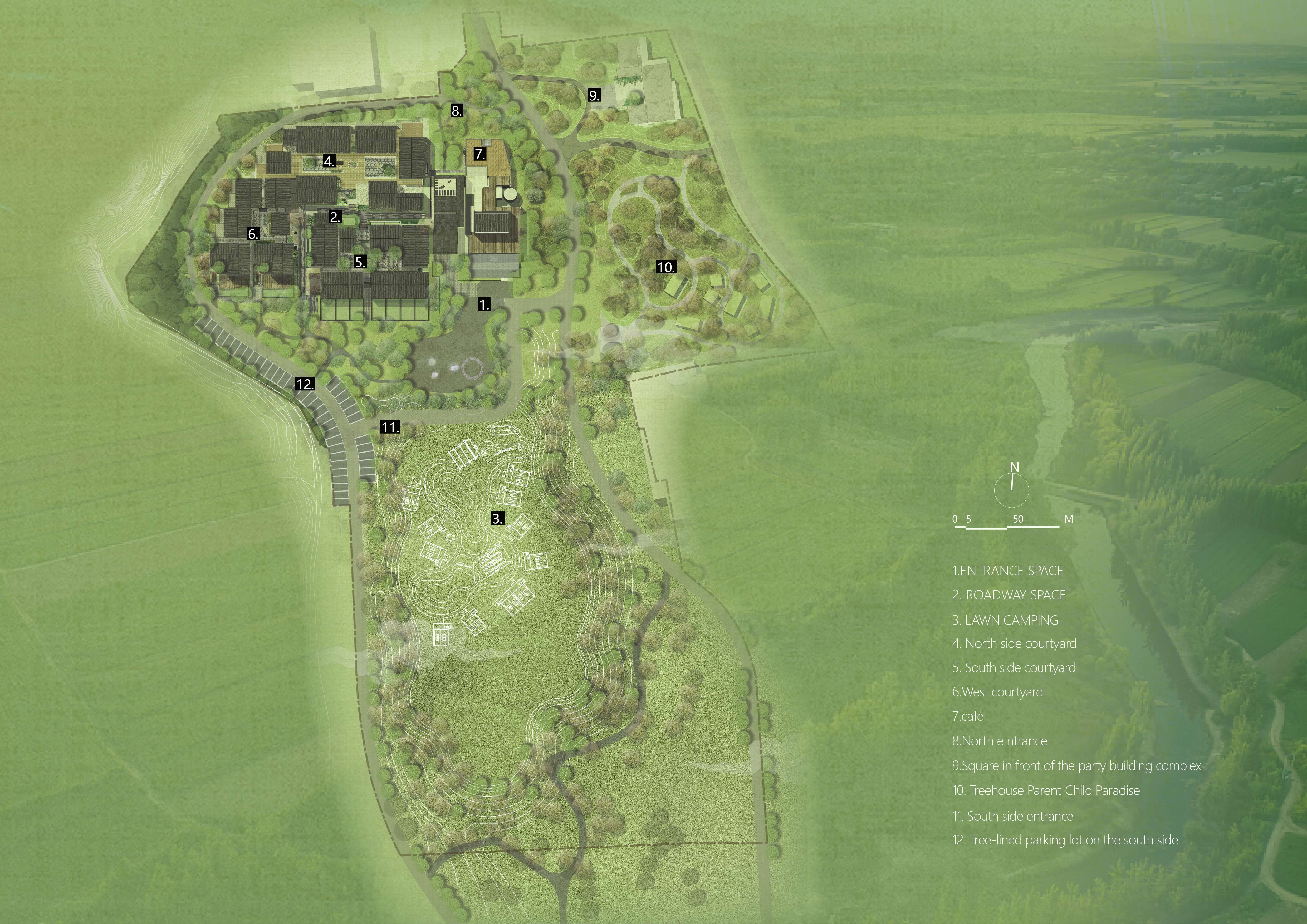

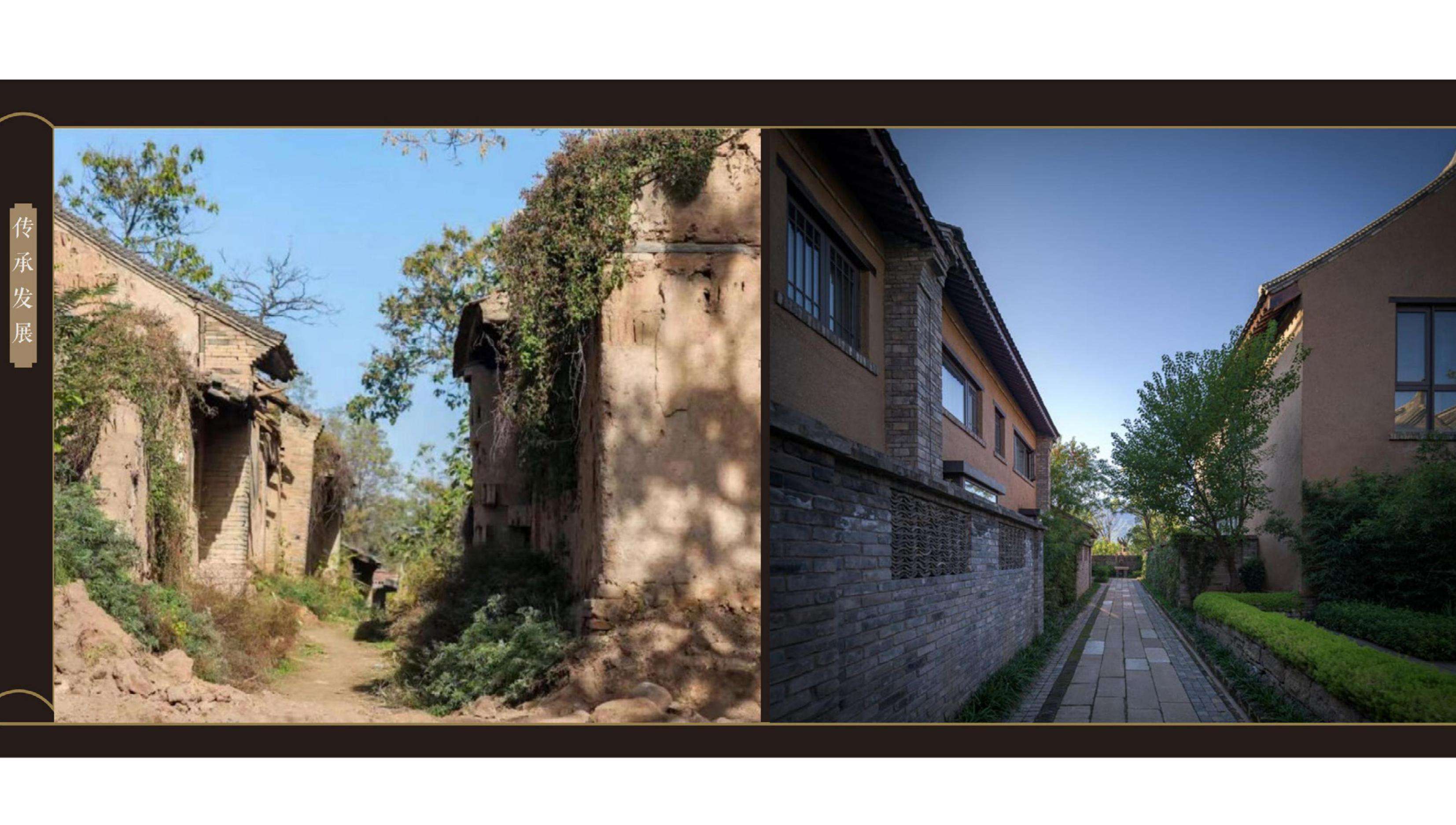
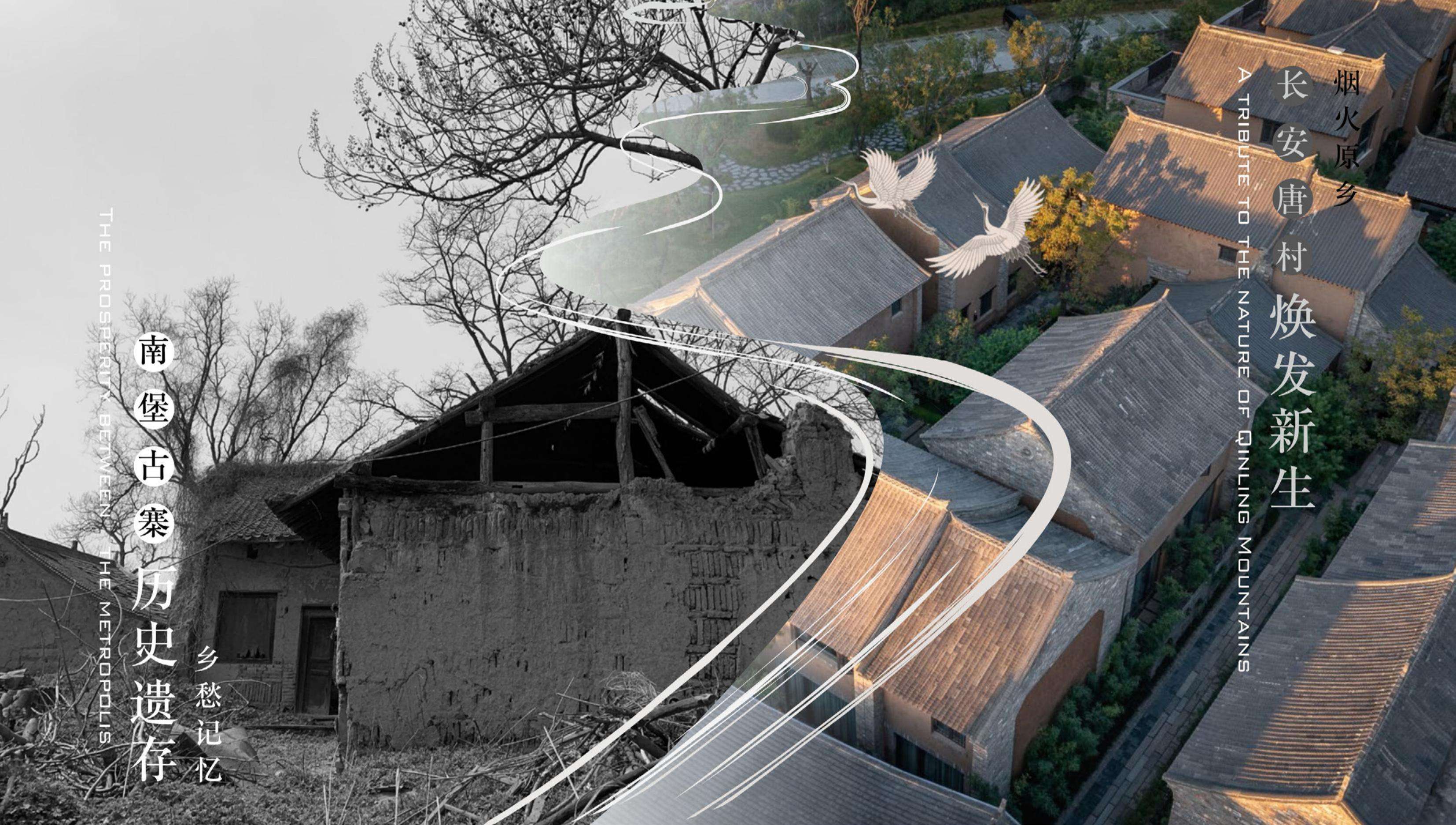

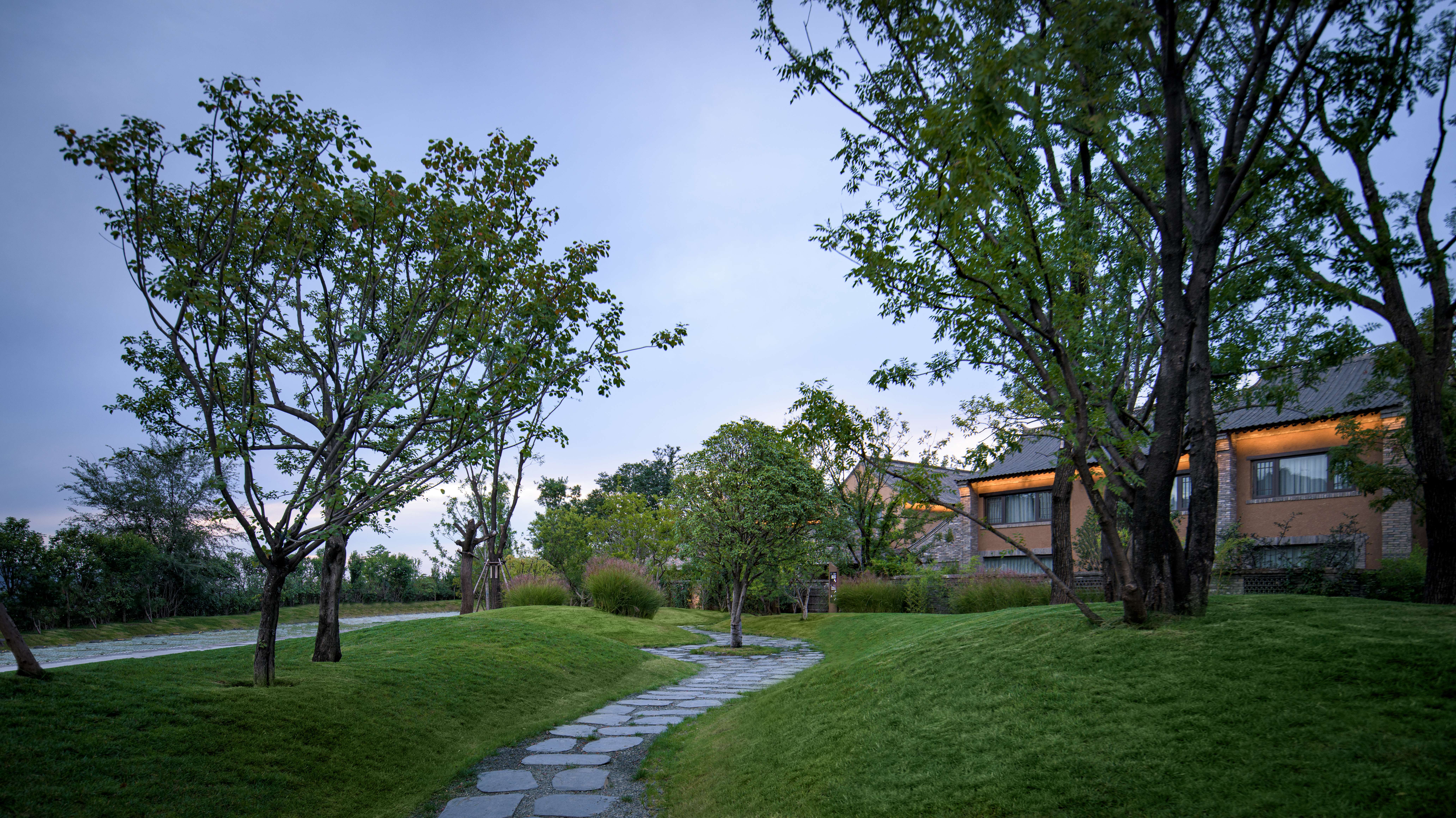
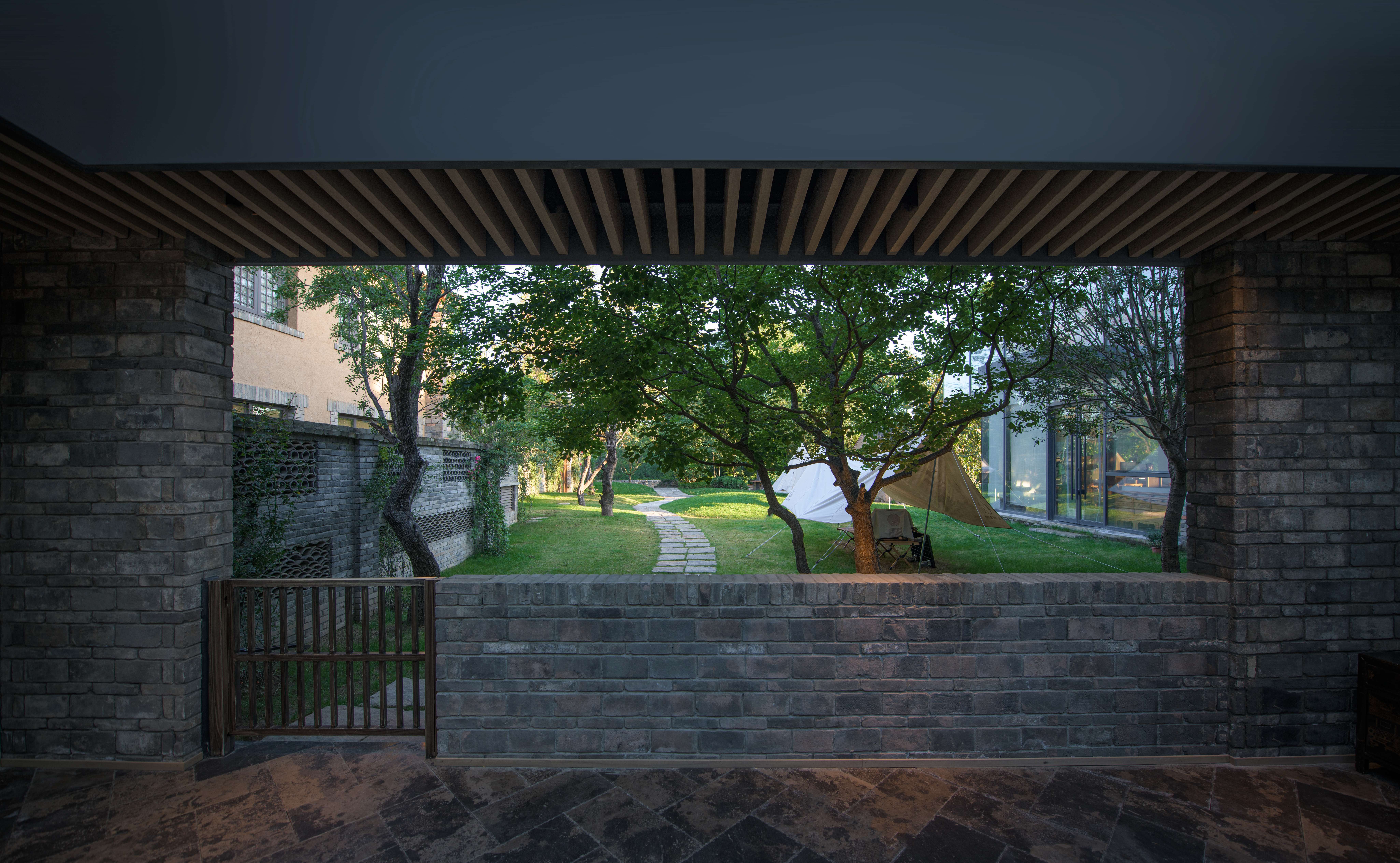
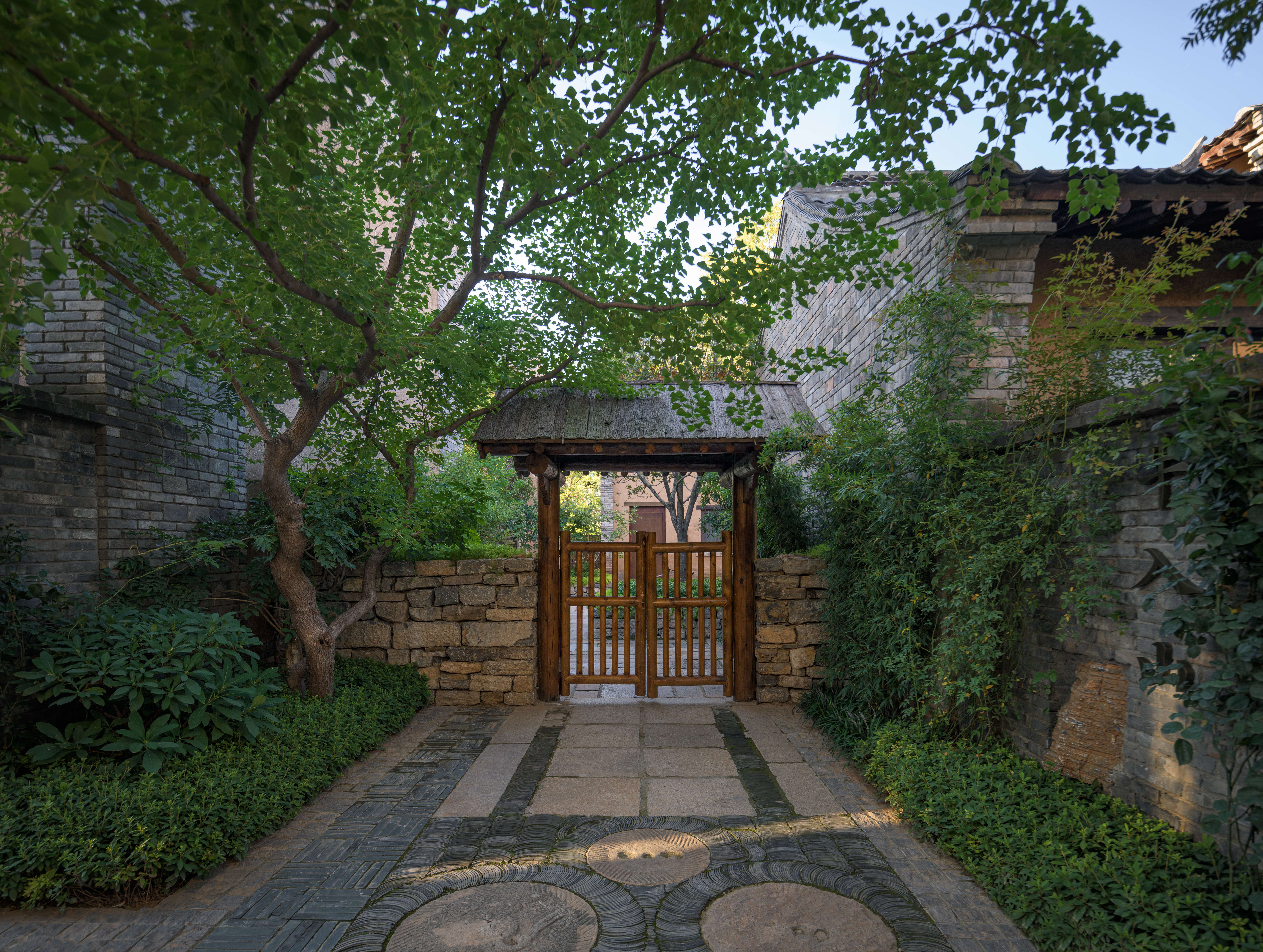
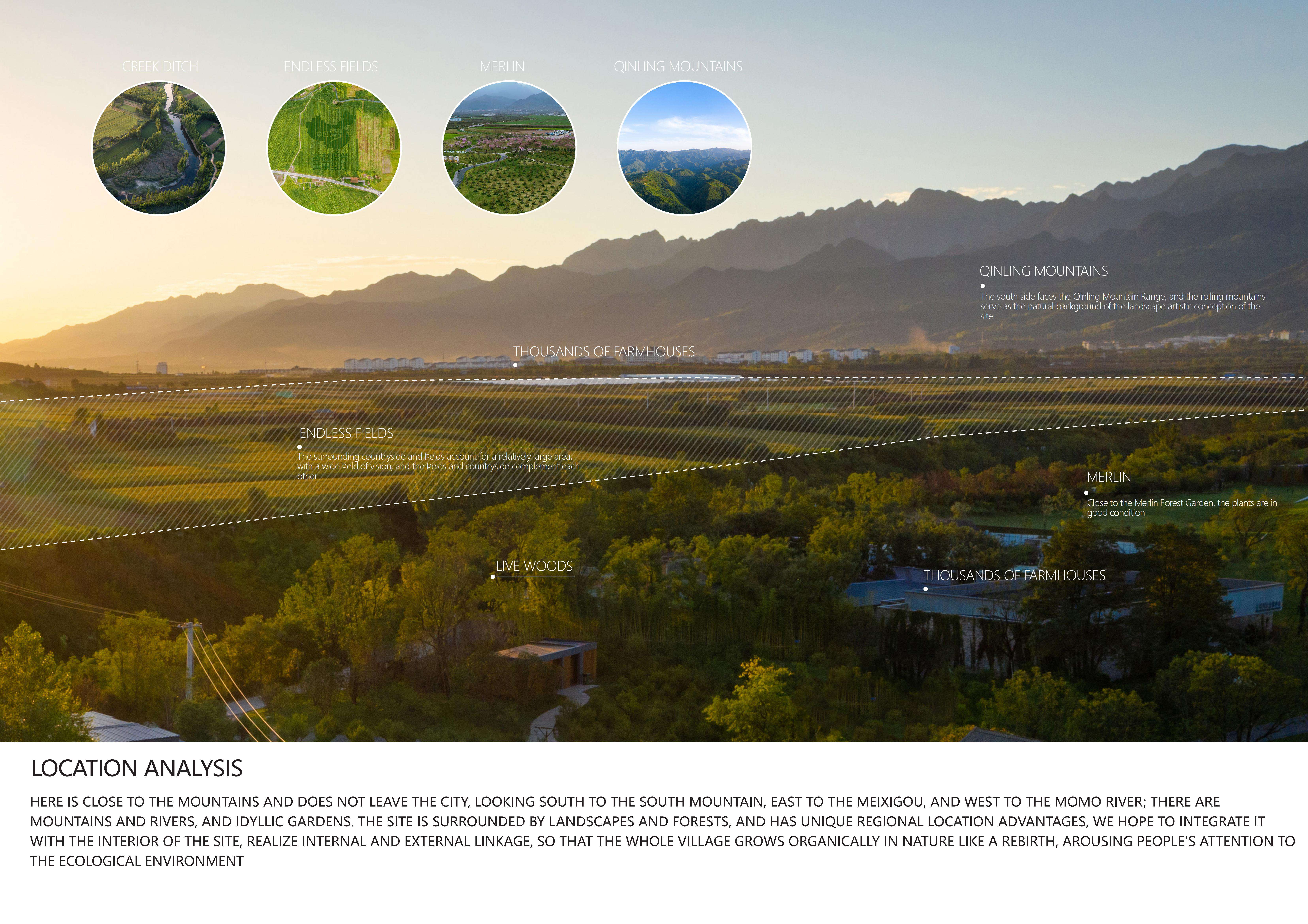

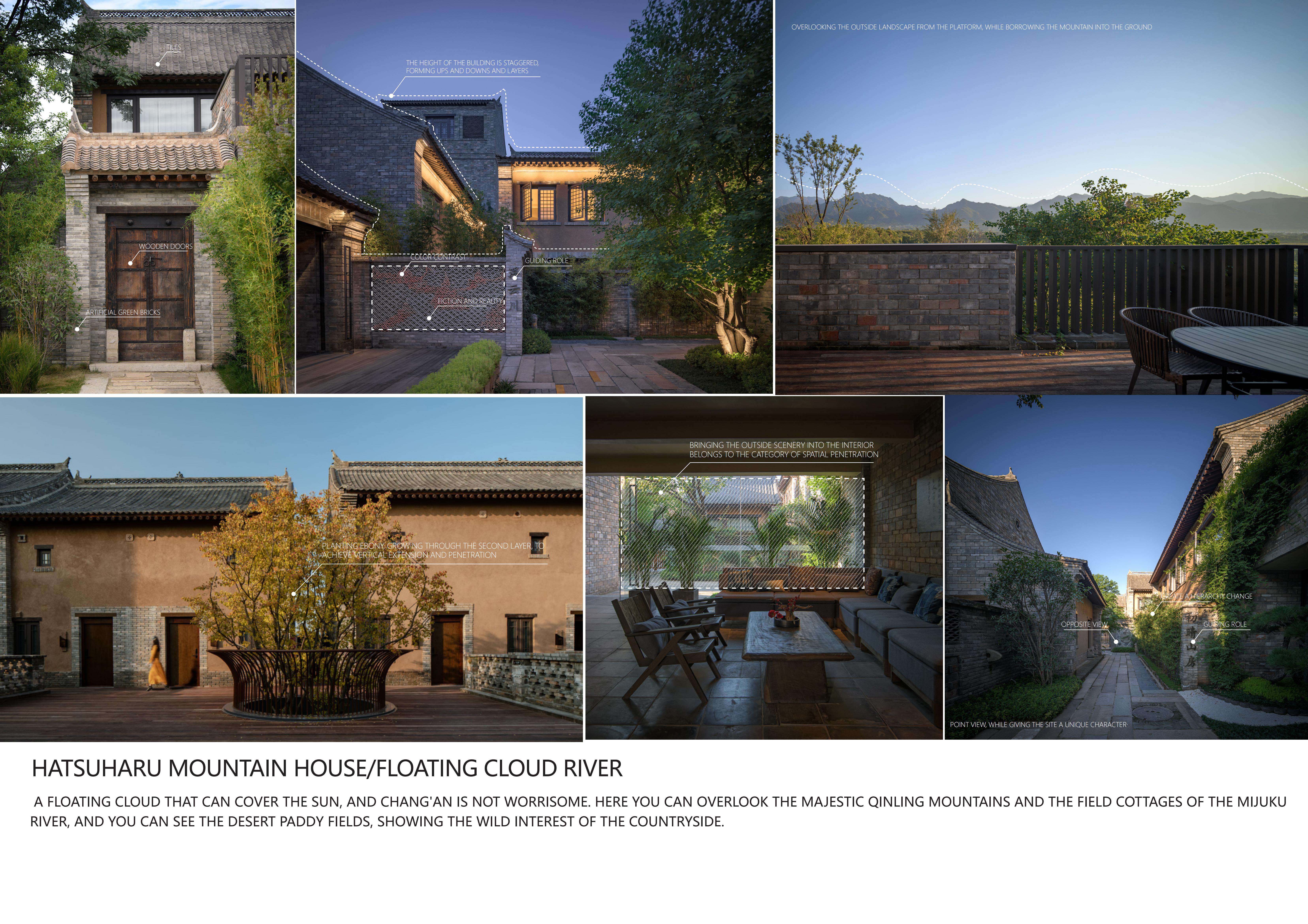
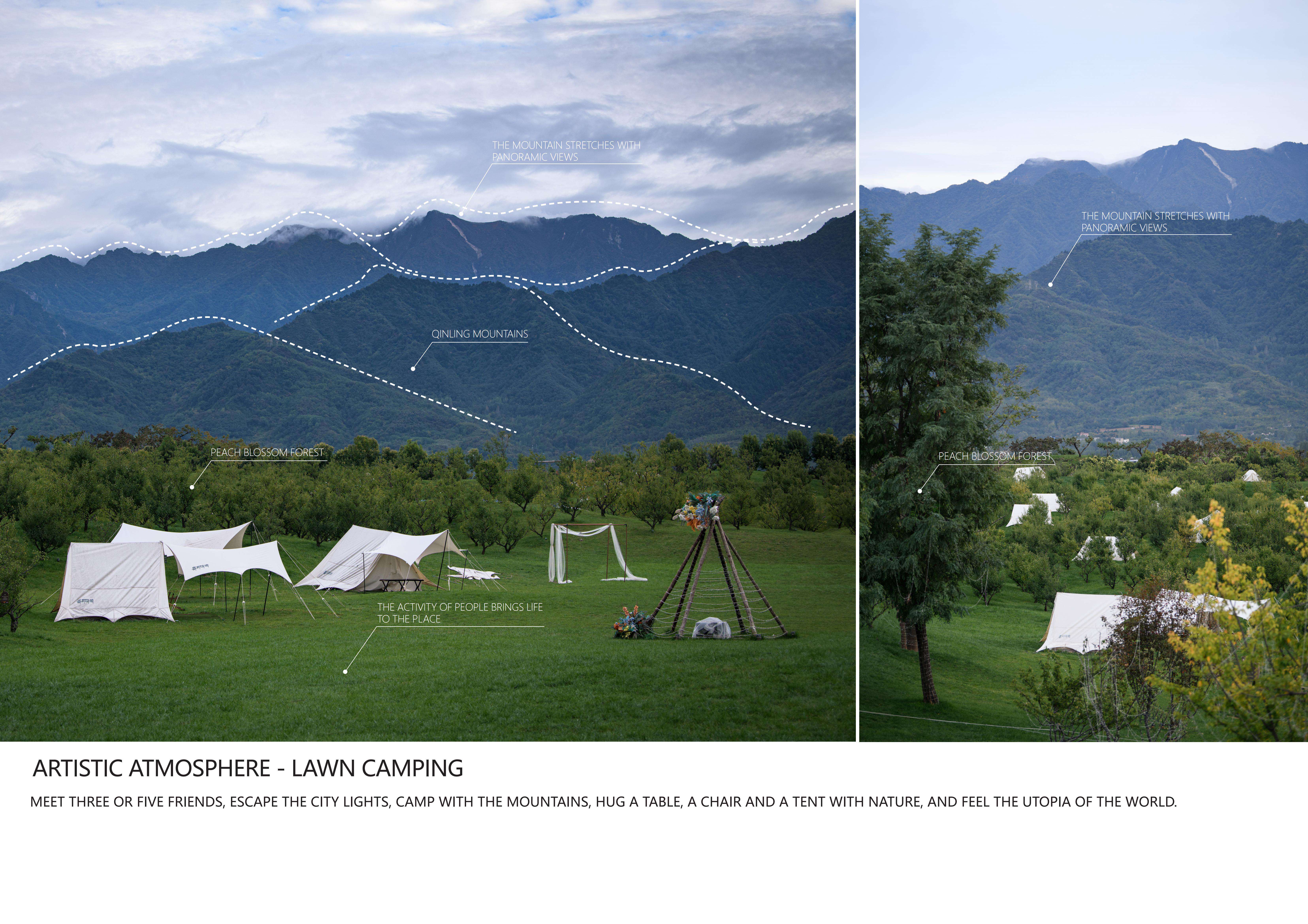
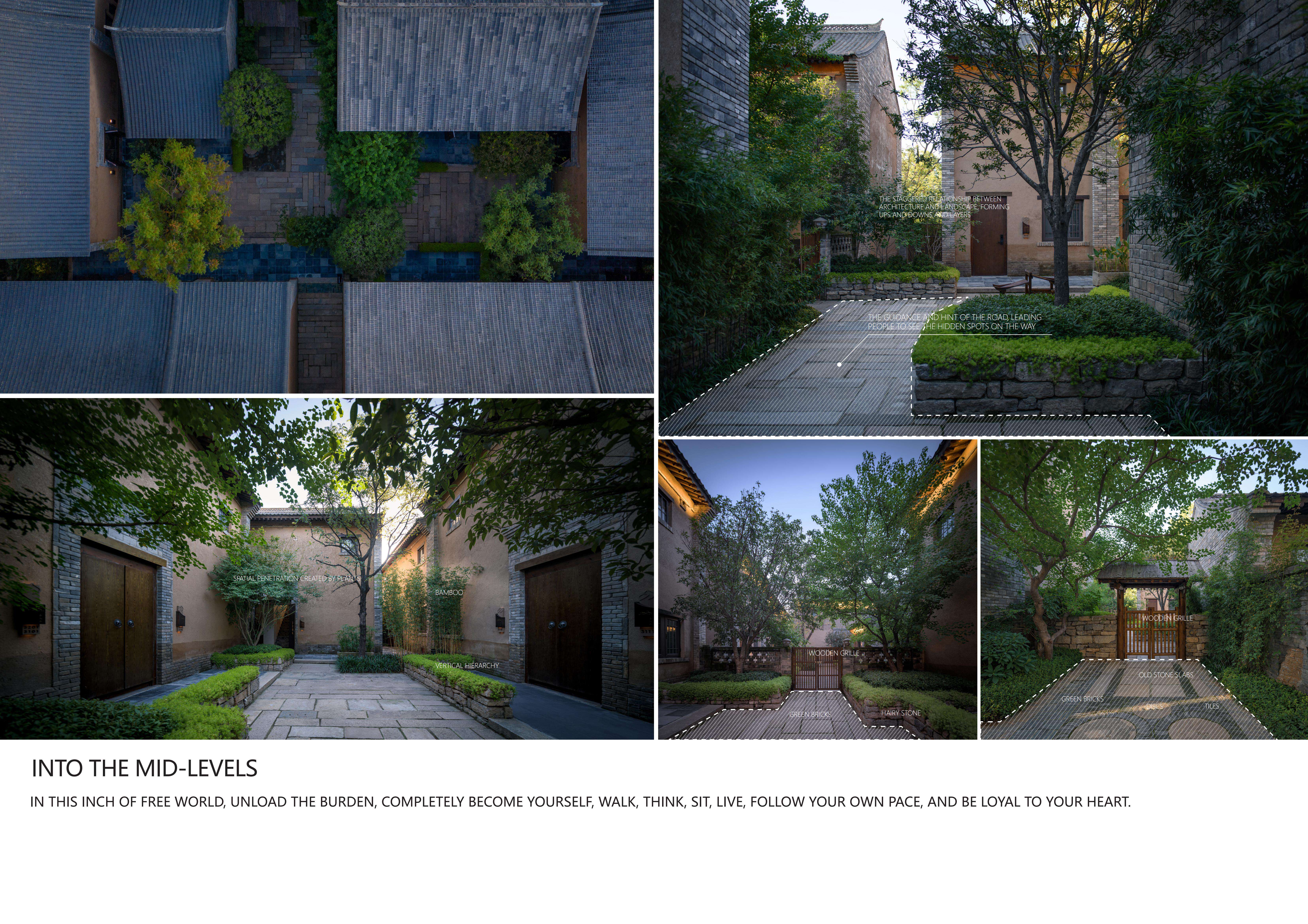


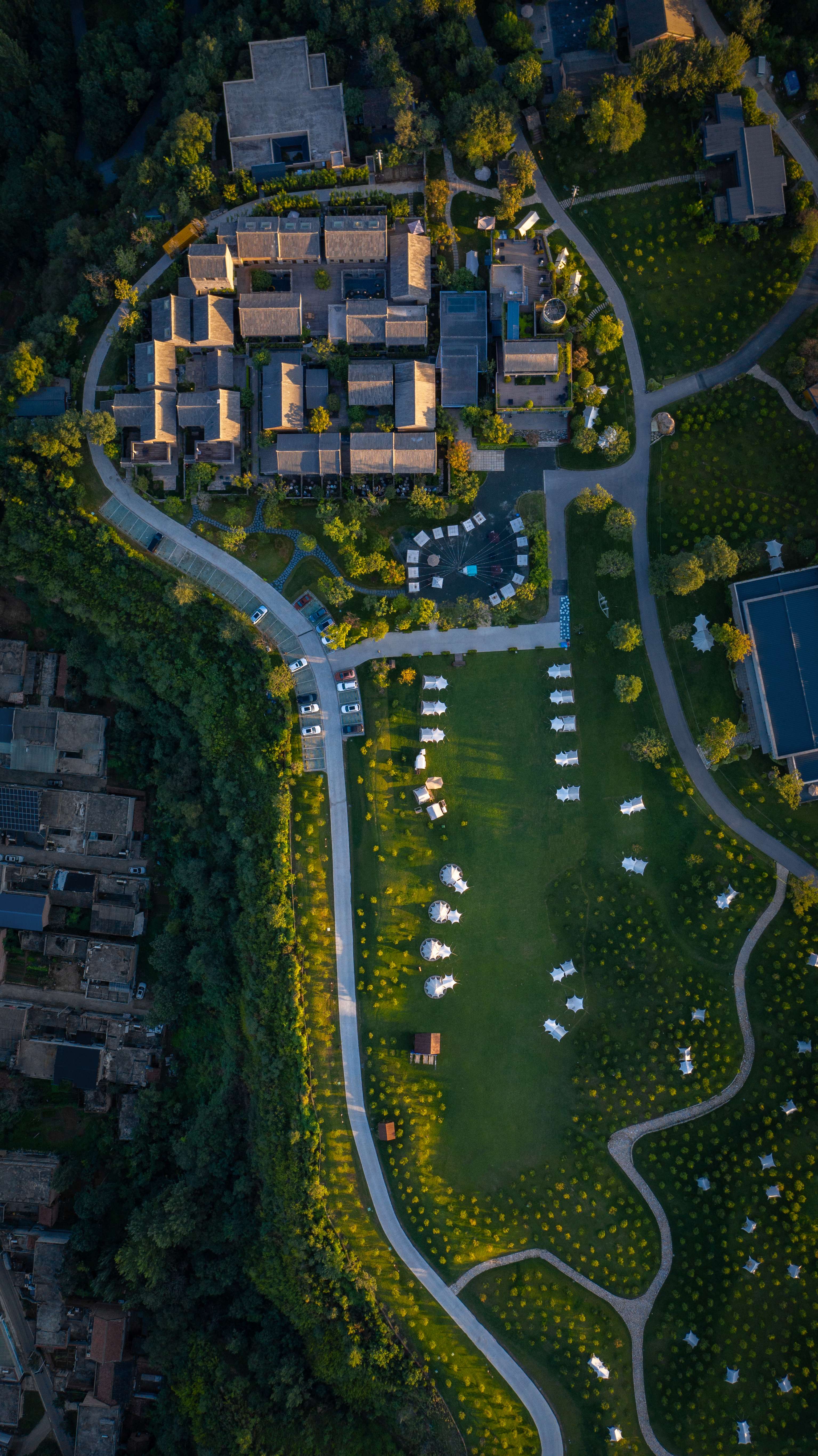
Complejo turístico Xi'an TANG Village
Xi'an TANG Village Resort
Xi'an TANG Village Resort
PROJECT STATEMENT:
Xi’an TANG Village Resort, located in the South City of Shaanxi, China, brings together the rhythm of the Zhongnan Mountain, and surrounding rivers and farmland to create a new urban ‘living room’ in the poetry space created by new development. 75460miles from downtown Xi’an, known for its historical heritage, natural beauty, and convenient location. The core of the resort is composed of a complete village residence that has been abandoned for a long time. Together with the architect team, the renovation incorporated a strategy to preserve the
exact village building framework while organizing an elegant and peaceful space series for hospitality and other outdoor activities. The design uses the natural landscape framework, while also preserving and maximizing the native vegetated areas.
At the TANG Village Resort, a fading settlement heritage meets the new landscape in a dramatic vista of mountains, rivers, and farmland, design provides a natural experience within an urban environment that gives a most enjoyable resort space to the people of Xi’an and visitors from the whole country.
PROJECT NARRATIVE
BACKGROUND
The project is located in the recreational belt around the city of Xi'an metropolis, at the southern end of the cultural axis of Xi'an. From Daming Palace, ancient city wall, Big Wild Goose
Pagoda, Lanyue Pavilion, Fanchuan, Shenheyuan to South Wutai of Zhongnan Mountain, a complete corridor from the imperial city to the people, from the city to the countryside, between Chang'an City and Zhongnan Mountain, is a place in the south of the city that always the main pictures in the ancient Chinese poets’ works.
Site is close to nature but not far from the city. We hope to integrate it with the site to achieve internal and external linkages, so that the entire village grows organically in nature as if reborn, and arouses people's awareness of the ecological environment. focus on
DESIGN OBJECT:
Tracing back to the original hometown, recreating nostalgia, creating a Tang-style village accommodation, a cluster of homestays in a poetic environment, based on the ecological environment, taking the Tang-style culture as the characteristics, and drawing a poetic picture of the Tang style.
The key to the design is to restore the living space of the rural dwellings and the cultural scenes of Tang poetry. These spaces originate from the team’s excavation and reconstruction of the original materials and cultural memory of the land, including the original scenes, farming, and planting, pastoral fun, literati gatherings, Poetic dwelling, etc., through tracing the source of Tang style, excavating the site, extracting the charm of Tang poetry, the exquisite freehand brushwork of Tang painting, the exquisite antiques of Tang architecture, and the customs and customs of Tang people...integrated with the entrance space and laneway space of Poetry and Tang the combing of the relationship between the three courtyard spaces and the small courtyard and the surrounding space connects the natural transition of the space, shortens the relationship between the space and people, and constructs the spiritual connotation of the whole place. Tang Suji gives nostalgia a home and a home for a soul that has nowhere to rest.
VILLAGE RENOVATION
The Nanbao ancient village was simple, secluded, elegant, and beautiful. We hope that it still retains the traces of time. Starting from the feeling of space, cultural artistic conception, and texture of the original village, we will create a grand scene of Tang Village with mellow ancient rhyme and beautiful artistic conception. "There is no slender dust in the countryside, and there are clear sounds in the mountains and rivers." The mountains and rivers in Tang poetry describe the natural landscape and pastoral scenery, expressing the taste of returning to simplicity, and pleasurable emotions, and expressing the leisure and aspirations of a reclusive life. The style is fresh and natural, and the artistic conception is light and leisurely. The landscape intention conveyed in the poem is extracted as the theme of the courtyard: five groups, Half into the Mountain, Chuqing Mountain House, Fuyunchuan, Jianshan Delin, and Zhuli Tingfeng, talk to the mountain and sleep with the poem.
INNOVATION
Through the ingenious construction of bamboo, logs, rubble, millstones, clay pots, tiles, bark, blue bricks, blue tiles, and other surface materials, it highlights the simple and unsophisticated hometown of Tang Village; End view, obstacle view, clip view, and other design techniques integrate the virtual and real line of sight of the space, creating a secluded and romantic space experience; through the intervention of time, the moss on the ground, the rest of the stone slab, and other details are reserved to highlight the space. The time traces of mellow beauty and
vicissitudes; relying on the Tang style elements of poetry, wine, tea, and paintings, together highlights the elegant and beautiful traditional artistic conception.
MATERIALS
Materials used in the project are old stone slabs, blue bricks, blue tiles, stone carvings, stone millstones, stone troughs, pottery pots, and other old objects mostly collected from the countryside for the construction of the project, and some of them are original cottages. Blue bricks and blue tiles are used for the regenerative construction of the project, highlighting the durability and sustainability of materials. The material itself has the baptism of time and the traces of time, highlighting the economic and social value of the old materials, highlighting the taste and artistic conception of the original hometown, highlighting the cultural characteristics of nostalgia, and setting off the collection of poems in Tang Dynasty more simple and far
reaching.
TECHNICAL HIGHLIGHTS OF THE PROJECT
In the integration of old and new sites, some areas consider the reshaping of the original sites and the natural connection, and the new sites, under the conditions of both hardware foundations, focus on the infiltration of cultural heritage as the core of the design, and use landscape scenes as cultural communication Through the construction of culture, the selection of materials, and the dialogue with the site space, residents can immerse themselves in it, feel the artistic conception of seclusion, the pursuit of nostalgia, and the placement of poetic souls under Nanshan Mountain. The rhythm of Tang poems tells the story of Chang’an Tang village poems and Tang Suji, to stimulate the cultural complex of the local historical context, integrate the surrounding environment, architecture, landscape, and interior space of the site with the overall environment of Tang village, and reflect the profound spiritual space and spiritual level convey the nostalgic culture of poetry and Tang culture, highlighting the poetic flavor and the hometown of fireworks.
